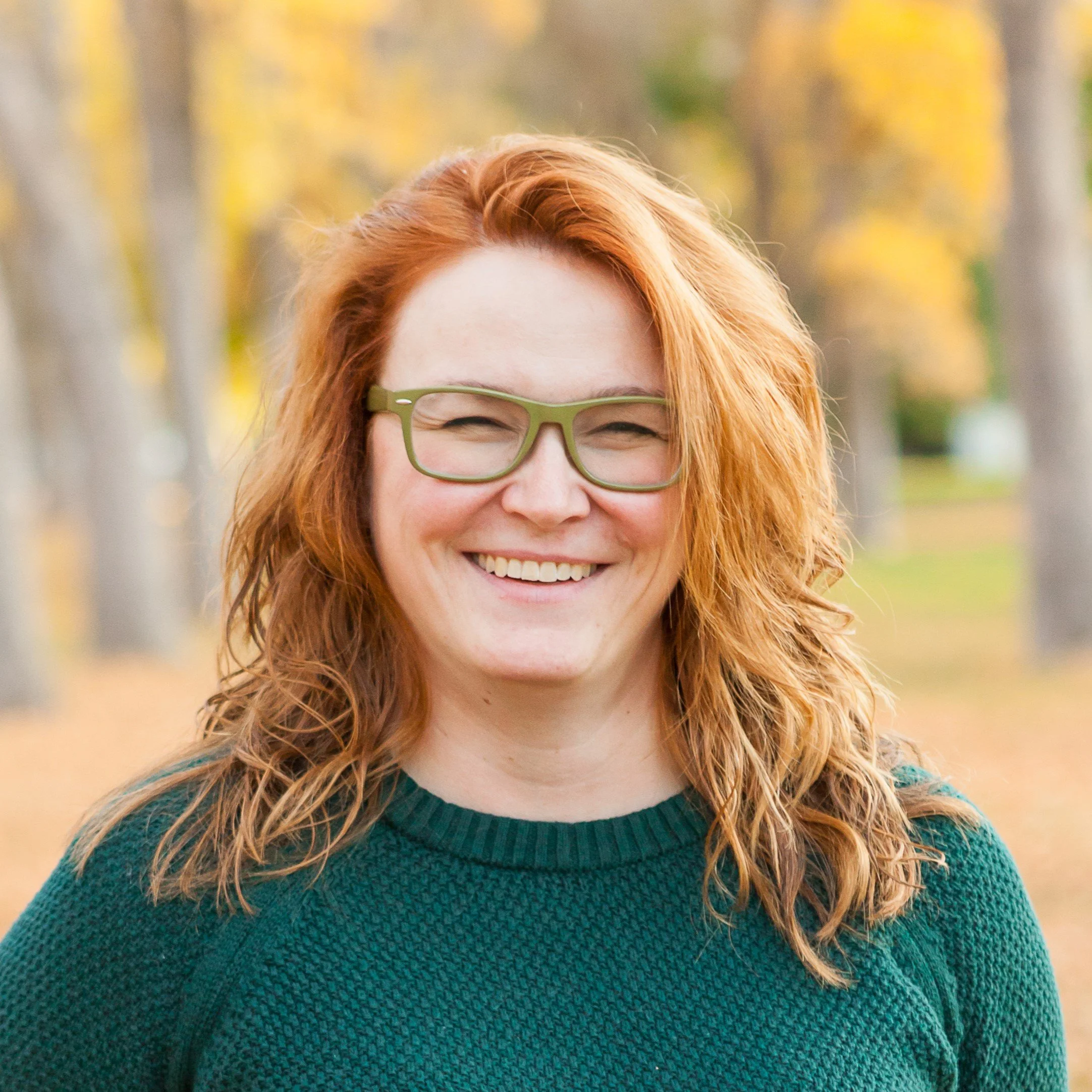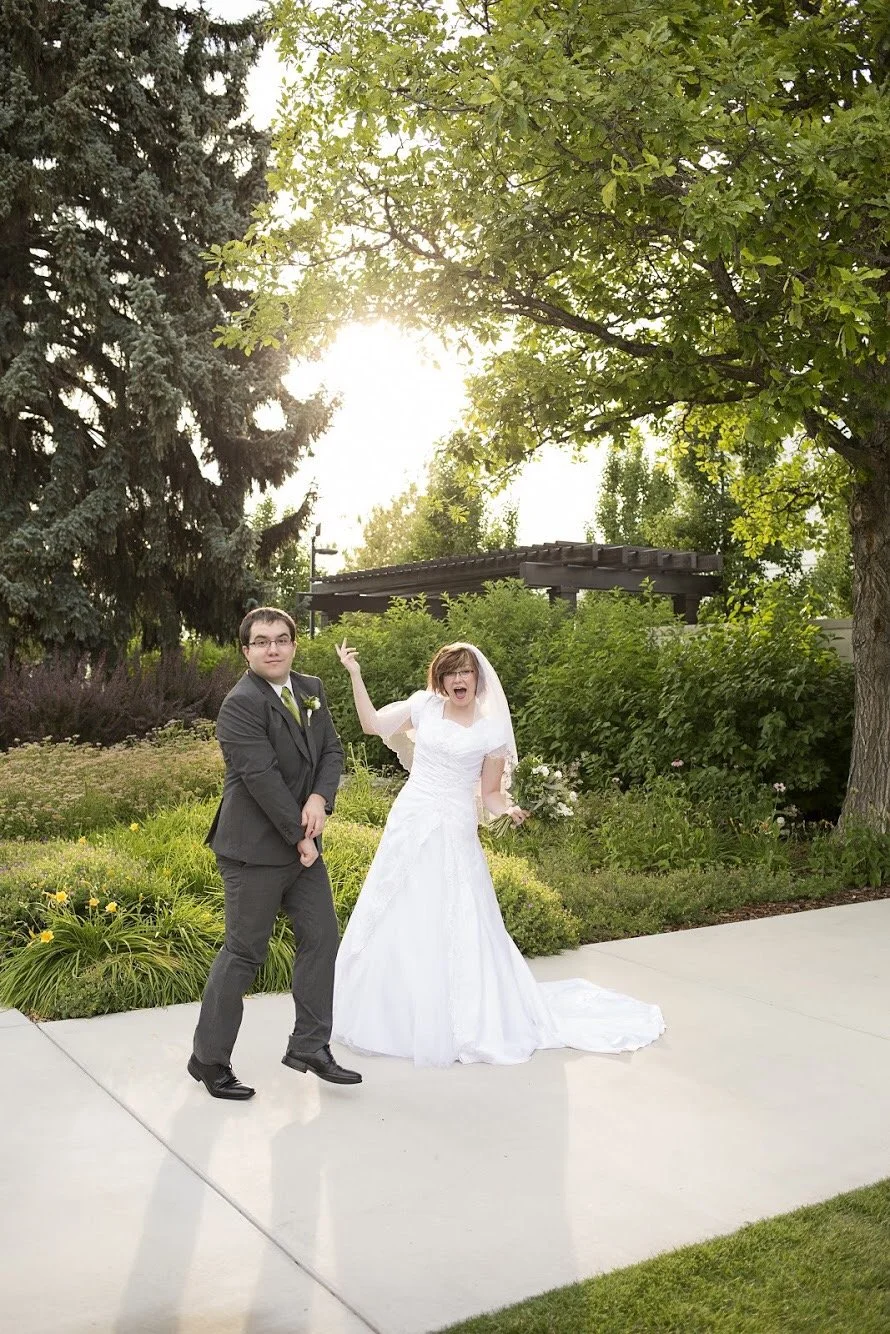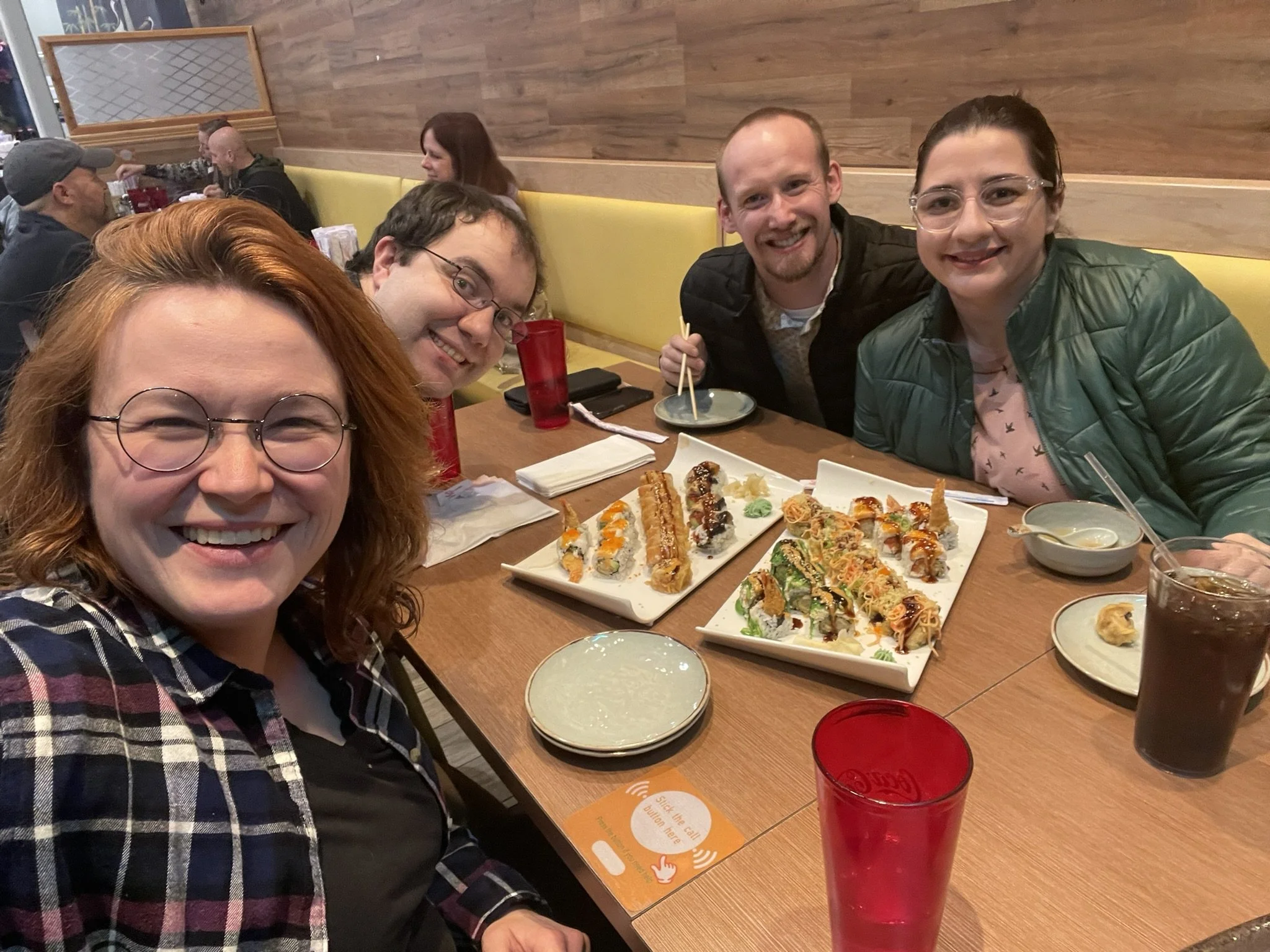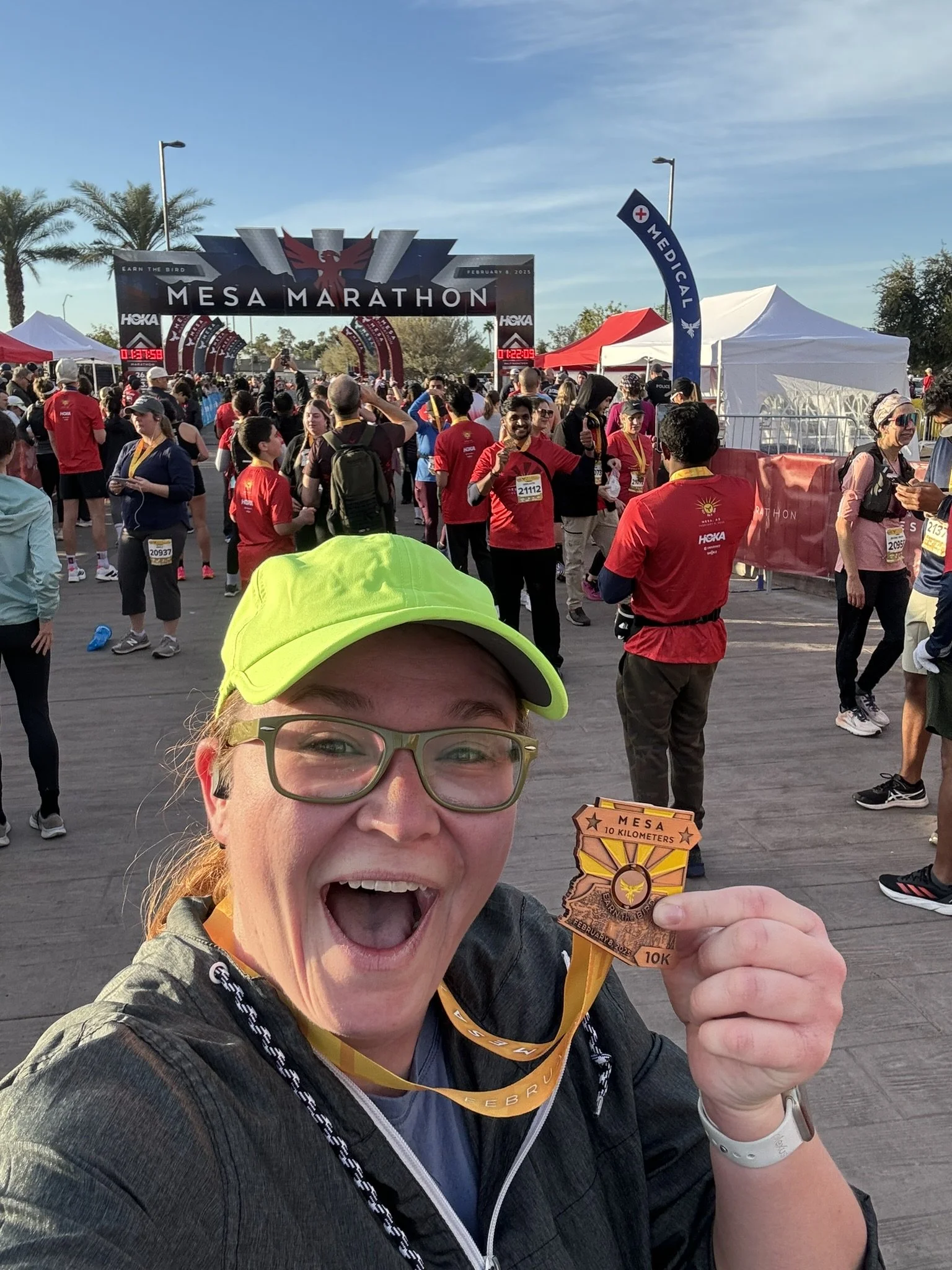content warning - sexual assault
Every month, Amberly Bean, 30, leads the Lift and Love youth support group on Zoom. She opens each session of new attendees with the same introductory joke, “I identify as lesbian but I’m married to a man but we’re not going to get into that tonight, it’s a long story.” Amberly and her husband Kendall have known each other since childhood. In fact, he was the name she’d throw out every time her middle school friends talked about the boys they liked, feeling he was a “safe crush because nothing would ever happen.” She laughs that, “Even when Kendall would hear that, there were no moves made—which felt really safe for me.”
After serving her mission and attending college, Amberly now lives with Kendall once again in Idaho Falls, ID, where she was raised in a devout and loving Latter-day Saint family. The oldest of three children, from the outside, her upbringing looked textbook—kind and faithful parents, an active church life, a close-knit community. But Amberly always knew there was something about her that was different.
She had come out to a close group of friends in her teens. But nearing the end of her high school years, the inner tension she felt with her faith reached its peak. “It was all or nothing,” she believed, rationalizing she could either be a lesbian or a member of the Church. There was no in-between. While she continued to attend church with her family, she said mentally, “for all intents and purposes, I was out.” During her senior year, Amberly experienced a tough break-up with a girl that felt like it was destroying her. She finally felt it was time to come out to her family and all her friends who cared about her.
Grateful to no longer hide so much of herself with her mom, whom she had always felt close with, she remembers her reaction as being as supportive as she could be at the time. Her mom’s words made her intentions clear: “I’ll love you no matter what you do, you’ll always be a part of our family. Nothing will change. But I know the Book of Mormon and gospel is where you’ll find guidance.” Determined to prove her wrong, Amberly asked herself, “How can any part of this faith guide me when it doesn’t even believe I exist?” But two weeks later after finishing the whole book, Amberly’s heart was moved in a way she didn’t expect. “I felt God with me. I didn’t know what would happen with my dating life or my future, but I knew I could figure things out if I had the gospel.”
That conviction led Amberly to prepare for a mission, in the second wave of 19-year-old sister missionaries. She was honest with her local leaders about past relationships with women, which initially led to the direction to wait a year before serving. The delay devastated Amberly, who felt unsure whether a straight person would have been given the same edict. But a week later, she was asked to meet with her stake president again, assuming there had been a logistical error.
Instead, her stake president shared an experience he’d had in the celestial room of the temple, where he distinctly envisioned her kneeling in a small room (which she recognized as her personal oasis where she spent time journaling, playing guitar, etc.). He felt she was ready to serve, and needed to go right away. Her mission papers were submitted that night.
That was the first time Amberly says she felt a confirmation that there is a lot of misunderstanding with how the church deals with queer members and their “sins and transgressions” and “what Heavenly Father actually feels about His queer children.” She says, “It was a big milestone moment for me.” She felt a very strong impression from above that her queerness is a gift. She does not believe her Heavenly Parents sent their kids down and said, “You guys get to be queer because it’s a trial and hard, so good luck.” Instead she has felt, “this is too pure of a thing to be bad.”
Serving in 2014, Amberly felt a deep desire to tell her story, but at the time, there were few visible LGBTQ+ Church members speaking openly—let alone affirmatively—about their identity and faith. She was worried that her news getting out on the mission “might not be kosher” while she was away from home sleeping in bedrooms with girls. She shared her story with one of her companions who then took it upon herself to tell someone else which started whispers around the mission which, later in her mission, resulted in Amberly getting emergency transferred under the pretense that she was gay and had a crush on the companion. Amberly said, “That’s hilarious. The first part is true, but this has been the hardest companionship I’ve had. Even trying to like her as a friend was hard.”
By the time she returned home, Amberly was emotionally exhausted and unsure how to navigate church life again. Once again, she took a break. Dating girls at BYU–Idaho was difficult, but something she ended up doing. Then came another heartbreak. A woman she’d believed she would spend her life with ended things, saying she was bisexual and thought she could make a relationship with a man work—something she didn’t think Amberly could do.
Feeling conflicted and reminded of painful past feelings, Amberly committed to being the best celibate member she could be. She tried dating men, but after coming out to one—her only serious attempt—he sexually assaulted her under the false belief that it was his duty to “fix her.”
The experience was traumatic and left Amberly certain she would never date a man again. The aftermath was confusing as she initially sought the support of leadership but instead felt blame. But transferring her records to a YSA branch back home in Idaho Falls was a turning point. This branch president was operating off of a reliance on the spirit about Amberly’s past romantic relationships with women. Through this branch president, Amberly found healing and increased trust for leadership, and men in general.
Amberly slowly rebuilt her sense of safety and belonging in the Church. She got her temple recommend back and committed to being “the best celibate lesbian ever,” convinced it was the only faithful path for someone like her.
Then Kendall, her “safe crush” who she’d known since elementary school, re-entered the picture. Amberly ran into Kendall’s mom and joked again about any of the handful of her boys being marriage potential. Amberly retorted, “I’d marry any of your boys.” Her number was passed along, and Kendall reached out during a spring break visit home. When she suggested hanging out, he declined and said instead that he’d love to take her on a date. Their first date lasted hours—they couldn’t stop talking. “It was the first time I actually liked a boy for real,” she says. “And it freaked me out.”
She laughs as she reflects that, “As Mormon dating goes, after two weeks, he said, he didn’t want to date anyone else. You?” Two weeks in, Kendall asked Amberly to be his girlfriend. She knew she had to “ruin it and tell him,” and feared the impending break-up. “I’m a lesbian,” she said over the phone. “I’ve only dated women.” Kendall didn’t miss a beat. “Do you still like me?” he asked. Upon her affirmative reply, he said, “Then I don’t see a problem if you don’t.”
Kendall’s steady support has become a hallmark of their relationship. They started dating in March of 2017 and married that August, though they’d known each other forever. Kendall finished his studies in physics at the University of Utah, while Amberly moved to Utah with him to work.
Now, nearly eight years later, they are raising two children—a five-year-old son and a toddler daughter—and building a life grounded in honesty, humor, and mutual respect. “It hasn’t always been a walk in the park,” Amberly admits. “We’ve done counseling. But in the past few years, it HAS been a walk in the park.”
“Kendall is pretty chill and secure,” says Amberly. “He sees this as just a part of who I am. He doesn’t need a ton of outside support, though we’ve connected with other mixed-orientation couples. We talk enough to be each other’s support.”
The couple used to be involved with Northstar but now mostly affiliate with their Lift & Love community, where Amberly loves leading her monthly groups with Kelly Cook. “We usually have four or five kids show up, sometimes more. We chat, do icebreakers, let them go for it and they talk. I love it. It’s something I would have loved to have as a youth in the church.” She says, “Out of the queer kids who attend, they’re mostly still active in the Church, trying to navigate that. Their hope and optimism is contagious.”
Post-COVID and postpartum, four years ago, Amberly felt she wanted to be more authentic about her identity in their “very small, very Mormon community.” Coming out in her current ward was a process. For some time, she’d hidden behind her role as Kendall’s wife, struggling to feel like her authentic self. “I felt like a shell,” she says. “It festered.” She knew something had to shift.
“I told Kendall I needed to come out,” she says. “And he said, ‘Then let’s figure out the best way to do that for you.” With his support and the encouragement of a few trusted friends in her ward, including a YW president she served with who promised solidarity, Amberly began telling her story.
The result? “Not much changed,” she says. Her bishop came over to chat, and it was a good experience. She felt well supported. She says, “Even though I’m not talking all the time about how gay I am, it hardly comes up actually… But if it does in context, I feel the freedom to say something. I can be authentic.” She continues, “People in church don’t realize—coming out in church is not so I can talk about being gay, but so I can feel my friends know me. This is a big part of me.”
She wants her kids to grow up seeing the full range of possibilities, and will talk to them about it someday. “I want them to see that you can be queer and have a happy, fulfilled life in the Church. And I want them to see that people outside the Church can be happy too.” Amberly believes more people need to see both sides of the coin.
AMY GADBERRY
Amy Gadberry, 29, has spent much of her life navigating the complexities of her identity, faith, and mental health. Recently, the West Jordan, UT resident has come to fully embrace her identity as a cisgender bisexual woman, a realization that has profoundly shaped her ability to finally feel self-acceptance. Newlywed life has also brought a new form of happiness, as Amy and her wife Emily Tucker, just celebrated six months of marriage. But while her path has ultimately led her to a life she once only dreamed was possible, not much of Amy’s path to this point has been straightforward.
Read More



















